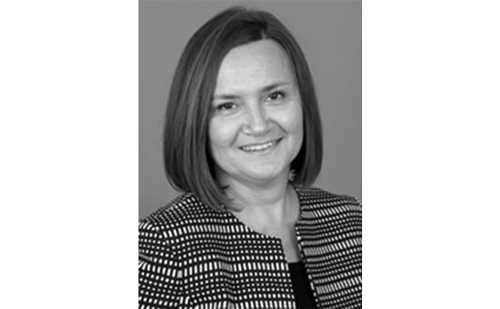Attention-deficit–hyperactivity disorder (ADHD) is one of the most common childhood psychiatric disorders, estimated to affect 5–10% of school-aged children worldwide.1 According to the Diagnostic and Statistical Manual of Mental Disorders – Fourth Edition – Text Revision (DSM-IV-TR),2 ADHD is defined by a persistent and age-inappropriate pattern of inattention, hyperactivity–impulsivity or both. Onset before the age of seven years and impaired functioning in two or more settings are required for the diagnosis. Impairing symptoms of ADHD may persist into adulthood in up to 60% of cases.3
Restless legs syndrome (RLS) is a sensorimotor disorder characterised by an irresistible urge to move the legs, which is often accompanied by uncomfortable sensations in the legs or, less frequently, other body parts. These sensations are relieved by movement and are worse in the evening or night and when resting. The diagnosis of RLS is based on the revised criteria developed by the International Restless Legs Syndrome Study Group (IRLSSG).4 Although RLS has traditionally been considered to be a disorder of middle to older age, several case reports have shown that it may occur in childhood.5 However, children may report RLS symptoms differently from adults, in part because of their limited ability to describe RLS sensations. In addition, the clinical presentation of RLS may differ in children. Considering these particularities, the IRLSSG has proposed a set of criteria specific to children.4
Polysomnographically, RLS may be associated with periodic limb movements in sleep (PLMS) in about 80% of patients, in both adults and children.4 PLMS are defined as movements that occur in series of four or more, lasting between half a second and five seconds, have an amplitude of one-quarter or more of the toe dorsiflexion during calibration and are separated by intervals of four to 90 seconds. RLS per se and/or associated PLMS may lead to significant sleep fragmentation. Therefore, RLS is a recognised, although sometimes overlooked, cause of insomnia.
In recent years there has been growing research into sleep alterations associated with ADHD.6 It has been correctly pointed out that sleep disturbances may mimic ADHD symptoms or are co-morbid with a ‘true’ ADHD (diagnosed according to DSM criteria).7 In both cases, the appropriate treatment of sleep disturbances may significantly improve diurnal ADHD symptoms. Given the relationship between RLS and sleep fragmentation, some clinicians started to look for a potential association between ADHD and RLS symptoms. Since then, interest in the relationship between ADHD and RLS has progressively grown.
In light of these considerations, the aims of this article are to critically review evidence on the relationship between ADHD and RLS, examine the potential mechanisms underlying this relationship, discuss the clinical management of RLS and ADHD symptoms when co-occurring and present some future directions for the research in this field.
Evidence of the Relationship Between Attention-deficit–Hyperactivity Disorder and Restless Legs Syndrome
In a review of the literature completed in 2005,8 our group examined the available evidence of the relationship between RLS and ADHD. We included two studies examining the prevalence of RLS in subjects with ADHD,9,10 three studies assessing the prevalence of RLS symptoms in subjects with ADHD,11–13 two studies exploring the prevalence of ADHD symptoms in subjects with RLS12 and one study14 (the only one conducted in adults) measuring the prevalence of ADHD in subjects with RLS.
We concluded that up to 44% of subjects with ADHD have been found to have RLS or RLS symptoms, and up to 26% of subjects with RLS have been found to have ADHD or ADHD symptoms. However, these data should be considered with caution given some of the limitations of the studies reviewed.
First, all of these studies were performed in clinical samples. Therefore, possible selection bias cannot be ruled out. Second, only two studies in children and one in adults used full standard criteria for the diagnosis of ADHD and RLS, whereas all of the others assessed only symptoms of ADHD or RLS. Therefore, it is not yet clear whether the association between ADHD and RLS symptoms is the expression of a real co-morbidity between two disorders (diagnosed according to formal criteria) or whether RLS mimics some of the symptoms of ADHD and vice versa (in the second case, a differential diagnosis between ADHD and RLS should be taken into consideration). One cannot exclude that both of these possibilities may be true.
In some patients ADHD and RLS may be co-morbid disorders, and in others RLS may mimic ADHD symptoms or vice versa. However, as correctly pointed out by Wagner et al.,14 it is unlikely that the association between ADHD symptoms and RLS is simply an artefact of similar symptomatology. In their study, the authors reported that RLS was associated with symptoms of inattention as well as hyperactivity. If the association between ADHD and RLS were due only to similar symptomatology, that would imply that RLS is also characterised by inattentiveness, which is a finding that has not been previously reported in the available literature on RLS. In addition, the leg discomfort that is characteristic of RLS has not been reported in ADHD.
A third limitation of the reviewed studies is that none of them used criteria for RLS specific to children, as proposed by the IRLSSG. Therefore, studies assessing the relationship between ADHD and RLS in childhood using these specific criteria should be encouraged.
A recent large epidemiological study by Gamaldo et al.15 (not available when our review was carried out) showed no significant association between RLS and ADHD. However, the conclusions of this survey should be taken cautiously because the diagnosis of ADHD was based on one item only (attention or hyperactivity problems as a child) from a telephone interview. In addition, as acknowledged by the authors, public awareness of ADHD has changed considerably in the last 40 years. Given that the mean age of their subjects was 47 years, the ADHD diagnosis may have been largely unrecognised in most of them during their childhood. Therefore, further epidemiological studies using more rigorous criteria are welcome to better assess the relationship between ADHD and RLS.
Potential Mechanisms Underlying the Relationship Between Attention-deficit–Hyperactivity Disorder and Restless Legs Syndrome
Several hypotheses may explain the relationship between RLS and ADHD symptoms. The first hypothesis takes into consideration sleep disruption associated with RLS. Patients with RLS often have severe insomnia because of their leg discomfort and periodic limb movements while trying to fall asleep. In addition, associated PLMS may disrupt sleep because of multiple arousals. While in adults sleep disruption usually results in excessive daytime sleepiness, in normal children it can lead to symptoms of inattention, impulsivity and motor hyperactivity. According to the hypoarousal theory of ADHD,16 children with ADHD may actually be sleepier than controls and may use motor hyperactivity as a strategy to stay awake and alert in order to counteract the tendency to fall asleep. Our group was the first to confirm this hypothesis with objective measures of daytime sleepiness (i.e. using the Multiple Sleep Latency Test) in a sample of children with ADHD.17 The findings of two other research groups are in line with our results.18,19 Therefore, RLS may lead, in some patients, to symptoms of ADHD through sleep disruption.
Another hypothesis is that diurnal manifestations of RLS may lead to ADHD symptoms. In children, the typical circadian component of RLS symptoms found in adults may not be present. RLS symptoms may be impairing or may appear exclusively during the day. According to Picchietti et al.,10 some children who are seriously affected with RLS cannot sit in school for extended periods during the day because they need to get up and walk around in order to relieve their leg discomfort. In a subgroup of patients, hyperactivity may thus lead to inattention through the mechanism of leg discomfort.
Alternatively, both RLS and ADHD may be manifestations of a common central nervous system pathology. Children with RLS, and a subset of children with ADHD, may share a common dopaminergic deficit. Several lines of evidence have shown a dopaminergic dysfunction in the mid-brain, frontal and pre-frontal regions of the brain in patients with ADHD.20 It has also been demonstrated that dopamine deficiency is involved in the pathophysiology of RLS.21
Iron deficiency may also contribute to the pathophysiology underlying the association between RLS and ADHD. Our group first reported significantly lower serum ferritin levels in children with ADHD than in controls without ADHD.22 Magnetic resonance imaging and autopsy studies have also shown that iron deficiency is involved in the pathophysiology of idiopathic RLS.23,24 The hypothesis of iron deficiency is not incompatible with the hypothesis of dopaminergic dysfunction, since iron is a co-factor for tyrosine hydroxylase, which is the rate-limiting enzyme for dopamine synthesis. Moreover, iron deficiency has been described to alter dopamine D1 and D2 receptor density and activity in animals.
Clinical Management of Patients with Both Attention-deficit–Hyperactivity Disorder and Restless Legs Syndrome
When associated with ADHD, RLS symptoms may exacerbate ADHD symptoms or cause a later onset of the symptoms of ADHD. In addition, children with RLS may refuse to go to bed, probably because they associate bedtime with the occurrence of unpleasant RLS sensations. Parents may consider this refusal to be the expression of a general oppositional attitude, ignoring the real cause of the child’s behaviour. Therefore, RLS may be overlooked in children with ADHD and oppositional behaviour.
It is also possible that ADHD worsens RLS symptoms. Chervin et al.12 noticed that adult patients with RLS sometimes report that increased daytime activity worsens their nocturnal symptoms. In the study by Wagner et al.,14 the RLS symptoms were more severe in RLS patients with ADHD symptoms than in RLS patients without ADHD symptoms. Therefore, we suggest systematically looking for RLS in patients with ADHD and, vice versa, identifying ADHD symptoms in patients with RLS. In addition, there appears to be a familial aggregation of ADHD and RLS. Therefore, we systematically look for ADHD and RLS in parents or siblings of children referred for ADHD and/or RLS.
Interestingly, with regard to therapeutic strategies for patients with both RLS and ADHD some case reports have shown the efficacy of the dopaminergic agents levodopa/carbidopa, pergolide25 and ropinirole26 in children diagnosed with both ADHD and RLS who have been previously treated with psychostimulants with limited efficacy or intolerable adverse effects. However, to date the limited number of patients treated and the absence of randomised, double-blind, placebo-controlled trials does not allow evidence-based recommendations for treatment to be made.
Conclusions
Clinical experience suggests that RLS and ADHD symptoms may co-occur in both children and adults. Clinical and basic research on this exciting, but usually overlooked, relationship is still limited. Further large cross-sectional and longitudinal studies in both clinical and epidemiological settings using rigorous standard diagnostic criteria for RLS and ADHD are necessary to better understand the relationship between these two disorders.
Research on the potential mechanisms underlying the association may advance our knowledge in the field. In particular, genetic studies to gain insight into the potential common genetic underpinnings are welcome. Such research should help us to understand whether ADHD and RLS co-exist as co-morbid disorders with distinct aetiopathogenesis, whether they share common underlying pathophysiological alterations or whether one of the two disorders leads to symptoms of the other.
Randomised, double-blind, placebo-controlled trials are needed to assess the effectiveness and tolerance of dopaminergic agents reported as being effective in available case reports (levodopa/carbidopa, pergolide and ropinirole), as well as of other dopaminergic agents (amantidine and selegeline). Given the possible role of iron deficiency, randomised, double-blind, placebo-controlled studies on the effectiveness and tolerance of iron supplementation in patients with both ADHD and RLS should be undertaken.
This body of research should lead to a better understanding of the relationship between ADHD and RLS, allowing better and more specific clinical management of patients who present with both of these disorders. ■













